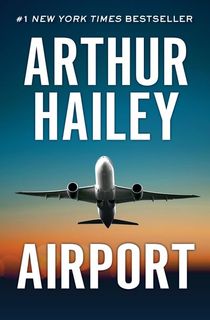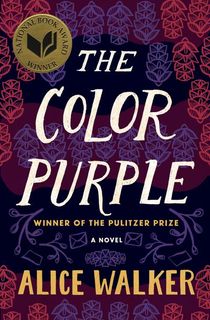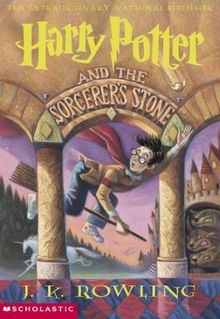While many of the best books are “timeless,” it’s also important to examine a book’s historical context. Because writers are so often influenced (however consciously) by real experiences and events, their work can immortalize a certain time, place, or feeling—while also offering insight into how we’ve evolved as humans. You can learn a lot about the past by reading pieces of great, classic literature.
That’s why we pored over bestsellers and literary award winners dating back to the early 20th century. The result? A curated list of the most popular books from the 1930s, and onwards, that tell us something about bygone eras. Read on to see which ones created waves in the decade you were born!
The 1930s

The Good Earth
1931
Pearl S. Buck’s masterpiece earned her the Pulitzer Prize in 1932, and set her on a path to Nobel fame. A sweeping family drama, it offers a glimpse at Chinese life prior to World War I—including the personal and social values of land, plus the impacts of events like famine and railroad construction. Due to its popularity, The Good Earth was credited with engendering Chinese sympathies in American readers, which some said influenced the countries’ future alliance.

Gone with the Wind
1936
Gone with the Wind has become a landmark work of American literature. In fact, some poll studies have shown it’s the only book we love more than the Bible. Mitchell’s historical epic is set against the backdrop of Civil War-era South, following the uppity Scarlett O’Hara’s coming-of-age. It was, of course, also the basis for the classic film of the same name—a phenomenon in its own right.

The Grapes of Wrath
1939
Steinbeck used The Grapes of Wrath as a vehicle for his political and social beliefs, hoping his portrayal of American poverty would “put a tag of shame” on those responsible for the Great Depression. It takes place in California and the Dust Bowl, where "Okie" farmers strive for better futures—despite the hopelessness of the era. The novel became a bestseller in 1939, then a movie and Pulitzer Prize winner one year later.
The 1940s

For Whom the Bell Tolls
1940
For Whom the Bell Tolls has been a mainstay on high school curriculums, and is largely seen as one of Hemingway's greatest novels. But even so, it has been a bone of contention among certain literary types (some like its peculiar, original style and use of language; others do not). It centers around an American on the Republican side of the Spanish Civil War, and frequently references real events and people.
Related: Why the Lost Generation Writers Still Resonate With Us

A Tree Grows in Brooklyn
1943
Smith’s semi-autobiographical novel of a childhood in Irish Brooklyn is one of the greatest coming of age novels. There is a variety of reasons for its immediate success: Published during a time of war, perhaps its central message—it's possible to overcome adversity—offered a sense of hope. Moreover, its nontraditional approach to gender roles may have resonated with readers uncomfortable with their own femininity and masculinity. What is incontestable is that it’s an affecting portrayal of family, growing up, and the American Dream during the 20th century.
Related: Frightened and Flustered: The Books You Read Too Young

The Naked and the Dead
1948
With World War II a tragedy of the very recent past, readers’ were drawn to The Naked and the Dead's unflinching exploration of the wide and varied casualties of combat. Of particular note was Mailer’s study of the dehumanization of soldiers, who he purposely calls "machines." The novel is partly based on his own experiences in the U.S. Army.
The 1950s

Bonjour Tristesse
1954
Sagan was just 19-years-old when Bonjour Tristesse exploded onto the literary scene. When Raymond’s meddling friend appears on his doorstep, bitter jealousies arise between the new arrival, Raymond’s teenage daughter, and his mistress. The "vulgar" (to quote one reviewer) sexual dramas that unfold caused an uproar in the 1950s—and naturally, sent everyone scrambling to get a copy of the book.

Lolita
1955
Nabokov’s most famous work was incredibly controversial in 1955, and it remains so today. Lolita’s pedophilic protagonist presents his own narrative—which involves a sexual obsession with a 12-year-old girl—in disturbingly sympathetic ways. As with the aforementioned Bonjour Tristesse, readers couldn’t resist a literary scandal, and gobbled it up.

Doctor Zhivago
1957
Set between the 1905 Russian Revolution and the onset of World War II, Pasternek’s historical epic is reminiscent of War and Peace. But it also has a fascinating history of its own: After being banned in Pasternak’s native U.S.S.R.—the Communist Party disproved of his take on the 1917 October Revolution—Doctor Zhivago was smuggled into Italy, then published to great acclaim.
The 1960s

The Spy Who Came in From the Cold
1963
The 1960s saw a lot of things, and the golden age of spy fiction was one of them. Writers like Ian Fleming, the creator of James Bond, were at the height of their powers. And then along came John le Carré—a former British agent writing under a pen name—who made his dazzling debut with this Cold War thriller. As the book predated events that would end an age of American innocence, its cynicism and morally gray hero were revolutionary at the time.
Related: 15 Nonfiction Spy Books More Thrilling Than John le Carré

Airport
1968
Though Airport is the movie that launched Hollywood’s obsession with disaster films, it actually makes a smarter book. Instead of having an action-only focus, Hailey’s original version spends more time with its characters—the ones on the ground, and the ones flying towards it. This combination propelled Airport to the top of the bestseller list in a decade saturated with quality thrillers.

The Godfather
1969
We simply can’t forget The Godfather. After its publication in 1969, it stayed on the New York Times bestseller list for 67 seven weeks and spawned one of the most quotable films of all time. While 1960s readers often gravitated towards commercial thrillers, Puzo’s novel managed to achieve mainstream appeal and status as a modern classic.
The 1970s

Breakfast of Champions
1973
Vonnegut’s prior work had already gained him devoted fans, which slated Breakfast of Champions for widespread success. And so it did—although Vonnegut himself was never satisfied with the final product. His distaste was certainly an anomaly, as most considered this satirical sci-fi mash-up to be one of his best books.

Ragtime
1975
E.L. Doctorow wrote a lot of great historical fiction novels, but few are remembered as widely and as fondly as Ragtime. This account of prewar New York City is colored by Doctorow’s modern political views, capturing the spirit of both the early 1900s and the 1970s.

The Thorn Birds
1977
The Thorn Birds found global fame, but it was a particularly big hit in McCullough’s native Australia (where it remains the best-selling book of all time). A sprawling family drama set in the Outback, it was also adapted into a miniseries that rivaled Roots in popularity.

Sophie's Choice
1979
Who can forget Meryl Streep’s tour de force performance in Sophie’s Choice? Not many, though her effectiveness stems from the film’s emotional source material: William Styron’s novel of the same name. Initially criticized for its sexual content, use of profanity, and non-Jewish protagonist, it has since become an essential piece of Holocaust literature.
The 1980s

The Name of the Rose
1980
Eco’s impressive Italian-language debut is a mystery set in a 14th century Franciscan monastery. Thankfully, William Weaver’s 1983 translation brought it to the United States, where it finally got the international recognition it deserved. Today, The Name of the Rose is frequently considered to be the precursor to the Dan Brown school of thrillers.

The Color Purple
1982
The Color Purple was lauded right out of the gate: It not only won the Pulitzer Prize for Fiction, but the National Book Award as well. Told in a series of letters, it follows a young black girl as she faces the challenges of life in racist historical Georgia. As with so many of the novels on this list, Walker’s has outlived its various controversies to become an enduring classic of 20th century literature.

It
1986
Stephen King was a household name by the mid-1980s, so he had free reign to sit down and churn out this massive tome. We first meet King's cast of characters when they're kids haunted by the sewer-dwelling Pennywise—and then as grown adults fighting the same childhood foe. It’s a coming-of-age story full of supernatural twists and nightmarish horrors that certainly changed the way everyone thinks of clowns.
The 1990s

The Wind-Up Bird Chronicle
1995
Though Haruki Murakami had published several successful novels before 1995, The Wind-Up Bird Chronicle was truly his breakthrough. Suddenly, English-speaking bibliophiles were devouring his work—the start of a dedicated cult following that continues to this day. Chronicle's themes and distinctive style established some of the trademarks of Murakami's later writing.

Angela's Ashes
1996
If you lived during the mid-1990s, you couldn’t escape Frank McCourt’s memoir of growing up in Limerick, Ireland. McCourt doesn't shrink from descriptions of his father's alcoholism or his family's poverty, and his honesty lends Angela’s Ashes a poignancy and surprising humor that secured the book's place in people’s hearts, minds, and personal collections.

Harry Potter and the Sorcerer’s Stone
1998
Harry Potter was an international sensation from the start, and Sorcerer’s Stone took America by a storm after a successful 1997 UK release. Aside from selling scores of books, it also renewed publishing’s flagging interest in children’s literature, and created a near-universal language. Say “muggle,” and everyone will know exactly what you’re referencing.
Related: 11 Books That Make Us Feel Nostalgic
The 2000s

The Corrections
2001
It’s not easy to climb the bestseller charts with a work of literary fiction, but Franzen pulled it off with his stunning 2001 debut. The Corrections follows an unhappy family at the turn of the millennium, and was chosen as an Oprah’s Book Club pick. It's dense, quite long, and immensely entertaining.

The Da Vinci Code
2003
Travel back to the early 2000s, and you’ll find everyone holding a copy of Dan Brown’s religious-themed mystery. You’ll also find the Catholic Church in a bit of an angry tizzy. Today, mocking Brown's prose is somewhat en vogue—although nobody can deny that The Da Vinci Code’s well-researched plot and clever turns are pretty darn compelling.
Related: 12 Authors Like Dan Brown
.jpg?w=640)
The Road
2006
In the mid-2000s, Cormac McCarthy was enjoying a run of mainstream success. His crime western No Country for Old Men was getting a major film adaptation, and The Road found a position on the New York Times bestseller list. A grim and sparse tale of survival, it’s likely been a major influence on the new crop of post-apocalyptic fiction authors.
Featured photo: Cover of The Grapes of Wrath by John Steinbeck





















.jpg?w=640)